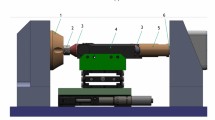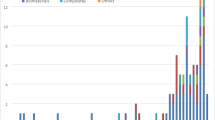Abstract
The split Hopkinson bar is a reliable experimental technique for measuring high strain rate properties of high-strength materials. Attempts to apply the split Hopkinson bar in measurement on more compliant materials, such as plastics, rubbers and foams, suffer from limitations on the maximum achievable strain and from high noise-to-signal ratios. The present work introduces and all-polymeric split Hopkinson bar (APSHB) experiment, which overcomes these limitations. The proposed method uses polymeric pressure bars to achieve a closer impedance match between the pressure bars and the specimen materials, thus providing both a low noise-to-signal ratio data and a longer input pulse for higher maximum strain. The APSHB requires very careful data reduction procedures because of the viscoelastic behavior of the incident and transmitter pressure bars. High-quality stress-strain data for a variety of compliant materials, such as polycarbonate, polyurethane foam and styrofoam, are presented.
Similar content being viewed by others
References
Nicholas, T., Impact Dynamics, ed. J.A. Zukas, T. Nicholas, H.L. Swift, L.B. Greszczuk, andD.R. Curran, Krieger, Malabar, FL (1992).
Ramamurthy, A.C., Brar, N.S., andSawas, O., “Deformation and Fracture of Thermopolyolefins (TPO) Plastics at High Strain Rates, Split Hopkinson Bar Experiments, a Preliminary Study,”Ford Motor Company, Detroit, MI (June1994).
Ramamurthy, A.C., Sawas, O., and Brar, N.S., “Deformation and Fracture of Thermopolyolefin (TPO) Plastics at High Strain Rates,” Advanced Coatings Technology Conference, Detroit, MI (November 1994).
Sawas, O., Brar, N.S., andRamamurthy, A.C., “High Strain Rate High/Low Temperature Response of Plastics,”Shock Compression of Condensed Matter-1995, ed. S.C. Schmidt andW.C. Tao, American Institute of Physics, New York (1994).
Zhao, Z. andGary, G., “A Three Dimensional Analytical Solution of the Longitudinal Wave Propagation in a Finite Linear Viscoelastic Cylindrical Bar. Application to Experimental Technique,”J. Mech. Phys. Solids,43 (8),1335 (1995).
Zhao, Z., Gerard, G., andKlepaczko, J.R., “On the Use of Viscoelastic Split Hopkinson Pressure Bar,”Int. J. Impact Eng.,16 (1),1 (1995).
Zhao, Z. andGerard, G., “On the Use of SHPB to Determine the Dynamic Behavior of Materials in the Range of Small Strain,”Int. J. Solids Struct.,33 (23),3363 (1996).
Wang, L., Labibes, K., Azari, Z., andPluvinage, G., “Generalization of Split Hopkinson Bar Technique to Use Viscoelastic Bars,”Int. J. Impact Eng.,15,669 (1994).
Kolsky, H., “Investigation of the Mechanical Properties of Materials at Very High Strain Rates of Loading,”Proc. Roy. Soc. B,62,676 (1949).
Follansbee, P.S., “The Hopkinson Bar in Material Testing”Metals Handbook 8, ASM, Metal Park, OH, 9th ed., 198 (1985).
Meyers, M.A., Dynamic Behavior of Materials, John Wiley & Sons, New York (1994).
Graff, K.F., Wave Motion in Elastic Solids, Dover (1975).
Kaya, I., “Very Early Time Characterization of Linear Viscoelastic Materials,” Ph.D. thesis, University of California, Berkeley (1968).
Sawas, O., “High Strain Rate Characterization of Low-density Low-strength Materials”, Ph.D. thesis, University of Dayton (1997).
Sawas, O., Brar, N.S., and Brockman, R.A. “High Strain Rate Characterization of Plastics and Foams Using Polymeric Spit Hopkinson Bar,” APS 1997 Topical Conference on Shock Compression of Condensed Matter, Amherst, MA (July 27–August 1 1997).
Walley, S.M. andField, J.E., “Strain Rate Sensitivity of Polymers in Compression from Low to High Rates,”DYMAT J.,1,211 (1994).
Author information
Authors and Affiliations
Rights and permissions
About this article
Cite this article
Sawas, O., Brar, N.S. & Brockman, R.A. Dynamic characterization of compliant materials using an all-polymeric split Hopkinson bar. Experimental Mechanics 38, 204–210 (1998). https://doi.org/10.1007/BF02325744
Received:
Issue Date:
DOI: https://doi.org/10.1007/BF02325744




